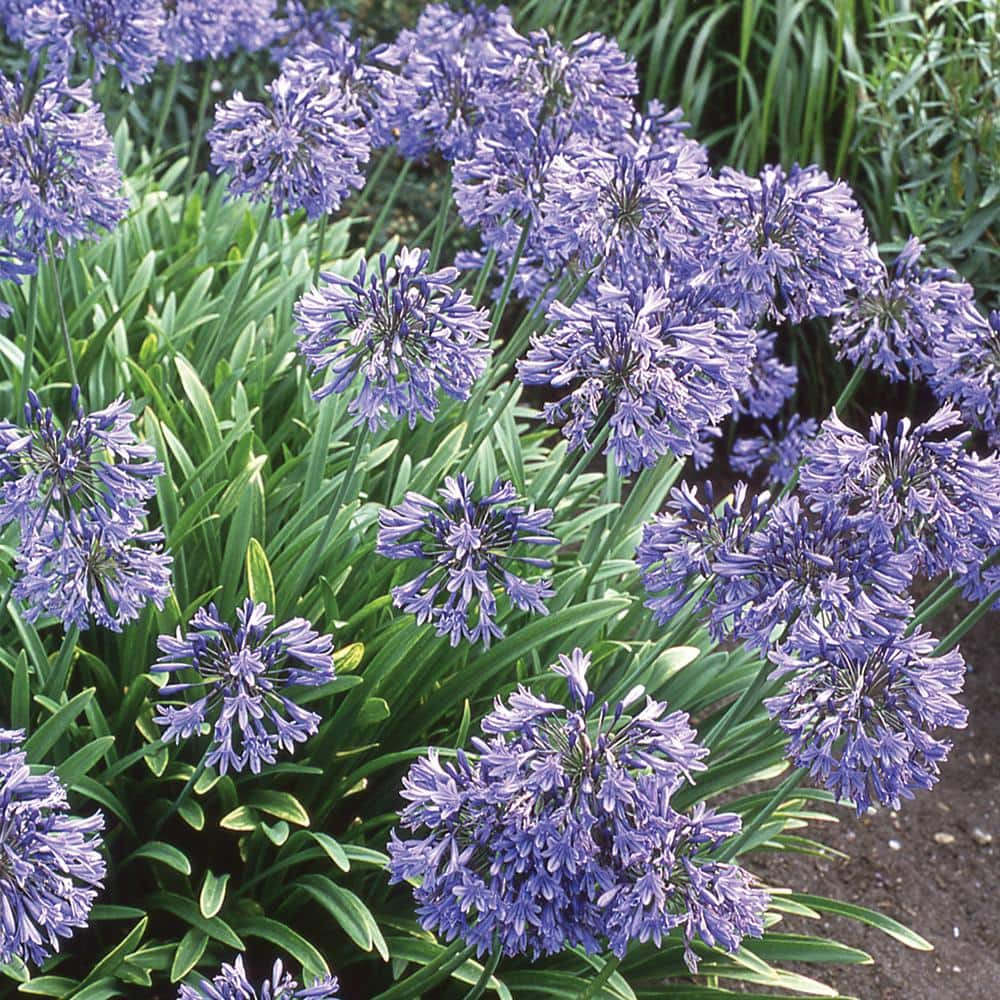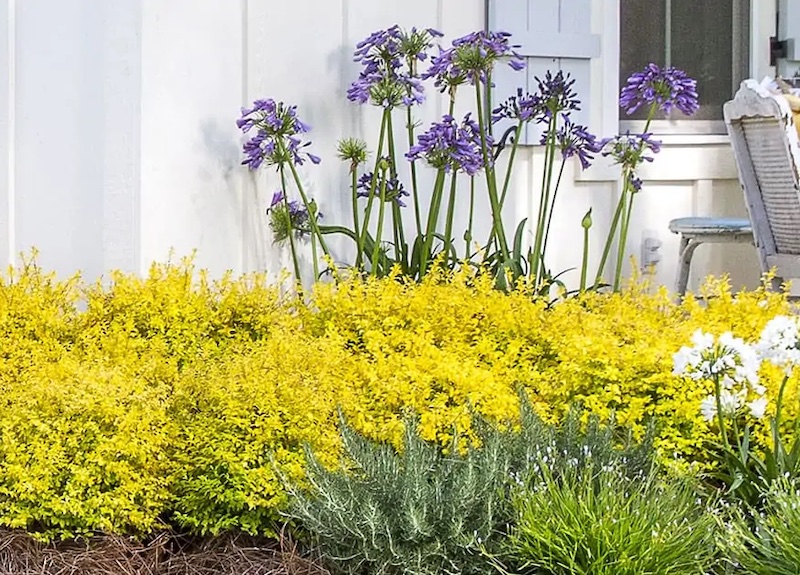How to Plant and Maintain Agapanthus in Your Yard
Releasing the Secret to Effective Agapanthus Cultivation: Idea for a Flourishing Yard
In the realm of gardening, growing agapanthus effectively needs a strategic technique that encompasses numerous aspects of plant care. With cautious focus to information, one can unlock the tricks to supporting these sensational flowers, resulting in a garden that thrives with elegance and vibrancy. By comprehending the subtleties of agapanthus farming, one can create a setting where these plants grow and flower generously. In the complying with discussion, we will explore vital ideas and tricks that will certainly direct you towards a flourishing agapanthus yard, supplying understandings right into ideal techniques, dirt conditions, sprinkling strategies, and much more.
Planting Agapanthus: Ideal Practices
When planting Agapanthus, appropriate dirt prep work is essential for guaranteeing effective development and advancement of these lovely flowers. Agapanthus, frequently referred to as Lily of the Nile or African lily, flourishes in well-draining dirt with a somewhat acidic to neutral pH degree - Agapanthus. Before planting, it is essential to modify heavy clay soils with raw material such as garden compost or peat moss to boost drain and give necessary nutrients for the plants
To grow Agapanthus, choose an area that receives complete sunlight to partial shade, as this will certainly promote healthy development and bountiful blooming. Dig a hole twice the size of the plant's root sphere and position the Agapanthus at the very same deepness it was formerly growing. Delicately backfill the hole with dirt, pushing down securely to eliminate any air pockets around the origins.
Water the freshly planted Agapanthus completely and remain to maintain the dirt uniformly wet, particularly throughout the plant's active expanding period. Agapanthus. Using a balanced fertilizer once a month can better support the plant's growth and flowering. By following these ideal techniques for growing Agapanthus, you can create a stunning screen of these fascinating flowers in your garden
Ideal Dirt Issues for Agapanthus
For optimum development and flowering success of Agapanthus plants, guaranteeing the dirt conditions are excellent is crucial. Agapanthus thrives in well-draining soil with a somewhat acidic to neutral pH level varying from 6.0 to 7.0. This sort of dirt permits appropriate water drainage, protecting against waterlogging which can bring about root rot. To improve soil water drainage, think about adding natural issue such as garden compost or peat moss when preparing the planting website. Moreover, Agapanthus prefers dirt that is abundant in nutrients, so including a well balanced plant food during the expanding period can promote healthy and balanced development and lively blooms.

Watering and Fertilizing Tips
To guarantee healthy development and vivid blooms, appropriate watering and fertilizing techniques are vital for effective Agapanthus cultivation. Agapanthus plants benefit from normal watering, especially during the growing period.
When it involves feeding Agapanthus, a balanced fertilizer with equivalent components nitrogen, phosphorus, and potassium can be applied in the springtime to advertise healthy growth and flowering. Slow-release fertilizers are optimal for supplying nutrients progressively over an extensive duration. Prevent over-fertilizing, as this can bring about extreme foliage development at the expenditure of flowers.
Additionally, incorporating raw material like garden compost right into the soil can boost nutrient levels and improve soil structure, aiding in the total health and wellness of the Agapanthus plants. By complying with these watering and feeding ideas, gardeners can guarantee their Agapanthus plants prosper and create magnificent display screens of flowers.
Trimming and Deadheading Methods
Proper trimming and deadheading strategies play an essential function in keeping the health and aesthetics of Agapanthus plants, complementing the crucial practices of watering and feeding for successful cultivation. Pruning Agapanthus involves removing invested flower heads, yellowing or dead leaves, and general shaping of the plant to advertise better growth. Deadheading, the process of getting rid of faded blossoms, not just boosts the plant's look but likewise urges further flowering.
When deadheading Agapanthus, it is suggested to clip off the blossom stem at the base utilizing sharp, tidy shears. This process reroutes the plant's power from seed production back right into root and foliage development, advertising a healthier and much more durable plant. Routine deadheading can prolong the flowering period of Agapanthus and prevent self-seeding, which can result in congestion.
In regards to pruning, Agapanthus normally benefits from a light trim after blooming you can look here to clean up the plant and motivate fresh development. Reducing the invested blossom stems and removing any dead or broken foliage assists see this website maintain the plant's vigor and general look. However, it is vital to avoid reducing into the crown of the plant, as this can weaken its health.

Protecting Agapanthus From Vermins and Diseases
Carrying out effective parasite and condition administration strategies is critical to securing the wellness and vitality of Agapanthus plants in farming. One typical bug that affects Agapanthus is the Agapanthus borer, a caterpillar that tunnels into the plant, creating damages to the leaves and flowers.
In enhancement to parasites, Agapanthus are at risk to illness such as root rot and fungal leaf places. By remaining watchful and addressing parasite and condition concerns immediately, garden enthusiasts can help their Agapanthus thrive and grow.

Conclusion
Finally, effective growing of agapanthus needs correct growing methods, perfect dirt problems, sufficient watering and fertilizing, normal pruning and deadheading, and protection from conditions and bugs. By complying with these tricks and pointers, gardeners can ensure a prospering yard full of gorgeous agapanthus blossoms. Agapanthus. Keep in mind to maintain constant care and attention to detail to advertise the health and durability of these magnificent plants
When growing Agapanthus, proper soil prep work is essential for making sure effective growth and development of these lovely blossoms.Water the newly grown Agapanthus her explanation extensively and continue to maintain the dirt evenly damp, particularly throughout the plant's energetic expanding season.For ideal development and blooming success of Agapanthus plants, making sure the soil problems are excellent is essential. When planting or transplanting Agapanthus, ensure the soil is well-prepared to supply the necessary foundation for the plants to establish themselves effectively. One typical parasite that affects Agapanthus is the Agapanthus borer, a caterpillar that passages into the plant, creating damages to the leaves and flowers.